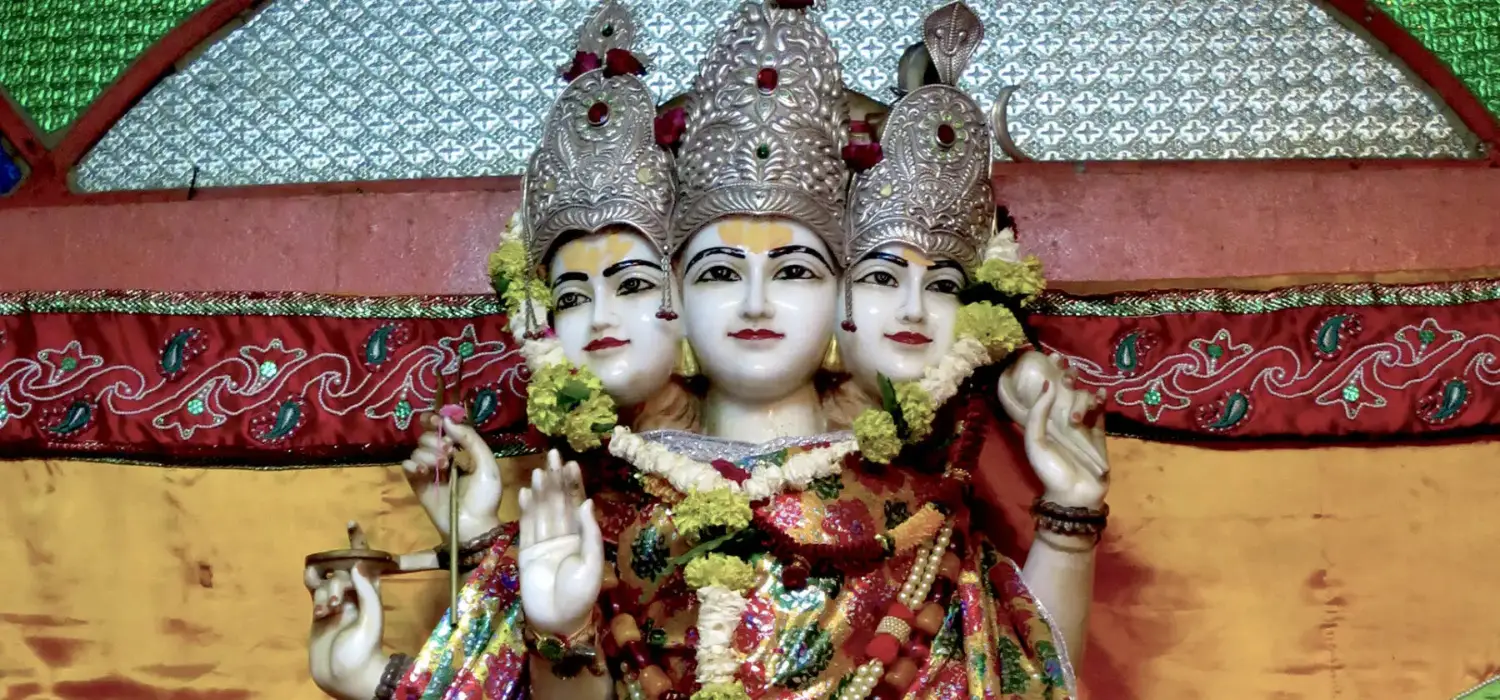
Dattatreya Teachings – Avadhut Gita

The Teachings of Guru Dattatreya in the Avadhut Gita
In Basel, Switzerland, Baba Rampuri discusses the ancient teachings of Lord Dattatreya in the Avadhut Gita, attributed to Dattatreya, Himself. Baba references some European Hermetic parallels, as well as to Kashmir Shaivism, and translates a significant passage from the Avadhut Gita.
With one’s mortal gurus and guru-bhais as witnesses, one calls on Lord Dattatreya for teachings. And He comes and sings His song through the mouths of His yogis and other devotees. His words, on the surface, in translation, tickle us with their irony and iconoclasm.
From the Avadhut Gita:
I am not a guru, I give no rite
I have no work to which I’m tied.
My true nature unembodied and clear
is like the starry hemisphere.
All this is on the surface is meant to be attractive and entertaining. It is very translatable and makes for interesting listening or reading. The translation appeals to our rational thinking, it makes good sense and is articulate in English and other languages, which has little to do with how it may sound in Sanskrit.
For in Sanskrit, in the bursting out in song that lives beneath the voices of its singers, in its hypnotic meter and rhyme, in the nuances and duplicities of words and sounds and their meanings that could never be anything but what they are, portals open up again.
He sings through us:
jnanamrtam samarasam gaganopamoham
We sing it forty times. Do you think he’s trying to make a point?
It is Guru Dattatreya’s refrain, punctuating all of Alice’s rabbit holes; a line that has never left me alone since the moment I first heard it. It echoed through my head. It made me chant it. It is a line which is at the very foundation of the Tradition of Knowledge. And, one finds curious resemblances with the Hermetic traditions as well.
Being a Westerner, my nature is to first consider the grammatical subject of the line, and sure enough the subject is I, aham,`and then the verb, an implied, to be. How do I translate the implications of having the subject so far away from the action, at the tail end of an articulation, as much for meter as for clarity, a final aham.
I am the immortality of knowledge – jnanaamritam, a mere lifting of “a” to “aa”, by fusion, takes us from death to immortality, “a mrita,” is literally, “no death.” Amrita is also nectar or elixir, and we will call it the Elixir of Immortality.
We got the juice, says the Pir of Dattatreya Akhara. Well, he used the word, rasa. Rasa has many meanings, the most common is juice, and it’s often used as “essence” as well. But there is also a transformative element in this essence, as rasa can also be Mercury, Quicksilver, a shape-shifter, capable of transforming other things. Rasayana is alchemy as it is the rejuvenation of the body.
Mercury-Hermes was the Messenger of the Gods in the ancient Mediterranean. Translated into Sanskrit that would be, “Avadhuta,” the common name of Guru Dattatreya, and the name of his song. “Thrice Great” Hermes Trismegistus bears an uncanny resemblance to the “Avadhut,” who’s three heads are those of the Indian Trinity.
The Pir had been an alchemist. He vehemently denied he had ever turned base metal into gold, but nevertheless had been attacked in his youth by robbers, looking for his loot. They couldn’t find his formulae, they were in his head. And he had no books.
Sama is one of those expansive words that finds articulation in countless languages around the world. “Same” in English, for example. In almost any bazaar in the world, traders and shoppers understand the expression, “sama-sama,” “same-same.” Two things that in some way are the same. Sama suggests similarity, equivalence, things that are in balance, using man as the fulcrum of all proportions.
Our surprise and delight in seeing identical twins is based on the irony of “same but different.” It’s not their “equality” that attracts us, it’s the fact that there’s an essential similarity that the two people share, and we want to know what that similitude is. Samarasa speaks to us of essential sameness, of similitude.
The key is the concluding statement gagana upama aham. Gagana is the firmament, the night sky. There are many words for sky, such as akash, which means “where the light comes from.” So lets think of gagana as the firmament, which is a dome housing stars and planets. Upama is a word indicating comparison, resemblance, simile, analogue. Aham is not simply, “I am,” but also is the “a” and “ha”, the “alpha” and “omega,” the beginning and the end, and everything in between. Appreciating the approximation involved: Dattatreya says,
I am the Analogue,
reflecting the firmament,
the immortal Elixir of Knowledge.